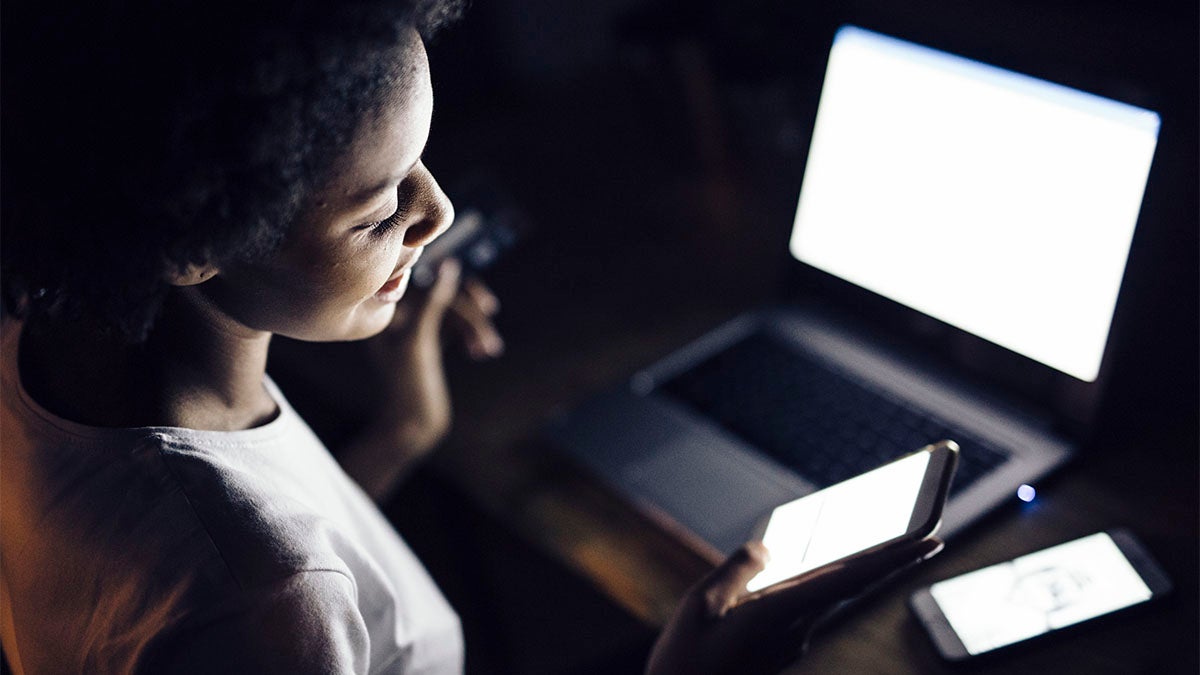Blue light: Sleep stealer and an athlete's hidden enemy

The blue light emitted by phone screens and television monitors is wreaking havoc on sleep schedules.
While important for anyone who isn’t getting enough sleep, athletes, in particular, should be more concerned because disturbed sleep has an effect on recovery and skill acquisition.

What is blue light? This type of light, which is emitted by electronic devices, is beneficial to humans during the day because it boosts attention, reaction times and mood. However, after the sun goes down, blue light can become disruptive. Research has shown it is responsible for suppressing melatonin secretion, the hormone responsible for causing drowsiness at night, which disturbs the circadian rhythm (how the body knows it’s night versus day).
A recent study from the Harvard Medical School reported a shifted circadian rhythm led to increased blood sugar levels to a prediabetic state and levels of leptin, a hormone that creates a feeling of fullness after a meal. For athletes, these effects are counterproductive when trying to recover from workout or injury or improve skills.
Another study, conducted by researchers at Stony Brook University, found a correlation between sleep deprivation and NBA players, particularly when those players tweet late at night.
The main source of blue light comes from electronic screens such as phones and televisions. Energy-efficient spiral fluorescent light bulbs and LED lights produce more blue light than the old-fashioned incandescent light bulbs, according to Harvard’s study.
The European Journal of Sport Science published in 2018 a study, “Restricting short-wavelength light in the evening to improve sleep in recreational athletes,” that collected data regarding sleep quality from athletes exposed to blue light before bed and from those not exposed.
“Fifteen recreational athletes, between ages 18 and 32 years (12 females, 3 males), were randomly assigned to start the intervention period with either the light restriction condition or the no-light restriction condition,” according the study’s report.
The group not exposed to blue light wore amber-lens glasses that blocked that type of light from their eyes. That group was recorded to have an improved sleep quality and increased alertness the following morning compared to the other group.
While all lights can cause some kind of disturbance when trying to sleep, blue light has shown to have the most powerful effect. Red light has the least effect on melatonin, which is why glasses with amber-tinted lens were used. The study asserted amber-lens glasses are a cost efficient and promising way to improve sleep for athletes.
The Harvard study offered the following advice for blocking blue light rays:
- Use dim red lights for night lights. It’s sometimes as easy as putting red tape over normal light bulbs.
- Avoid looking at bright screens beginning two to three hours before bed.
- Telling someone to not look at a screen before bed isn’t often doable, so consider buying a pair of glasses like the amber-tinted ones used in the study or installing an app that filters blue wavelengths at night.
- Lots of bright light exposure during the day can boost the ability to sleep at night, as well as a person’s mood and alertness during the day.
Nikole Tower is a senior journalism student at Arizona State University
Related Articles
Overlooked impact of sleep can be key for athlete's performance
Apnea is nothing to sleep on for football linemen - it can be deadly

